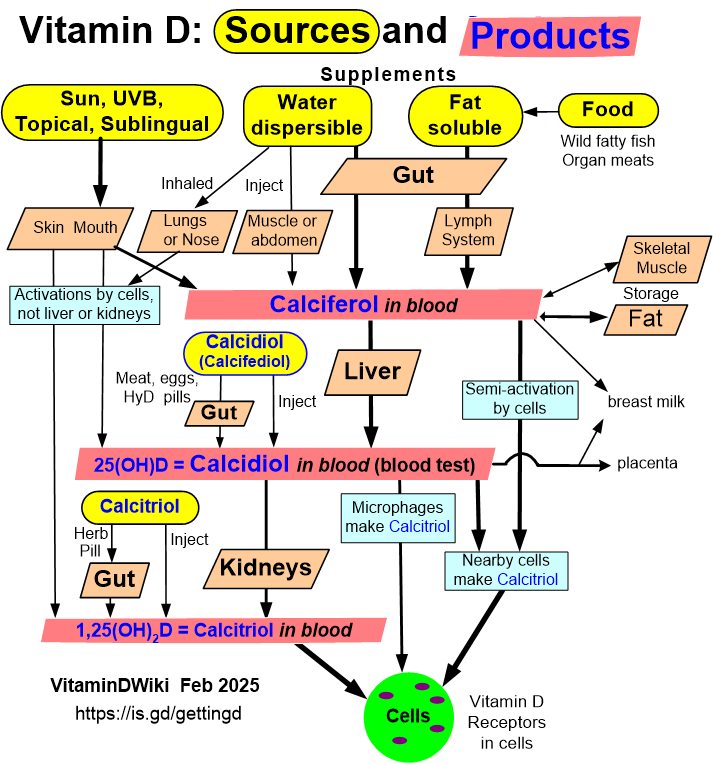400,000 IU barely raised liver transplant candidate vitamin D levels (no surprise)
Effectiveness and Outcomes of Current Practice in Treating Vitamin D Deficiency in Patients Listed for Liver Transplantation.
Endocr Pract. 2015 Mar 18:1-26.
Chaney A1, Heckman MG2, Diehl NN2, Meek S3, Keaveny AP1.
 See also VitaminDWiki
* Overview Liver and vitamin D
* Poorly functioning livers do not process vitamin D (Calcidiol is needed) – Sept 2014
* Calcidiol may be 5X more effective than Vitamin D3 – June 2012
* Very low Vitamin D levels after Liver transplant in children (need Calcitriol or topical) – May 2021
1. VitaminDWiki pages containing TRANSPLANT in content
{LIST()}
See also VitaminDWiki
* Overview Liver and vitamin D
* Poorly functioning livers do not process vitamin D (Calcidiol is needed) – Sept 2014
* Calcidiol may be 5X more effective than Vitamin D3 – June 2012
* Very low Vitamin D levels after Liver transplant in children (need Calcitriol or topical) – May 2021
1. VitaminDWiki pages containing TRANSPLANT in content
{LIST()}
OBJECTIVE:
Vitamin D deficiency is prevalent in cirrhotic patients awaiting liver transplantation (LT). Optimal vitamin D management for these patients remains undefined. We sought to determine the effectiveness of our practice in addressing vitamin D deficiency in LT patients.
METHODS:
This retrospective study included 127 patients who received a first LT between July 2010 and July 2011. Outcomes measured included re-admission rates, fractures, and functional status post-LT. 25-hydroxyvitamin (OH) D deficiency was stratified as: mild 20-30 ng/mL, moderate 15-19.9 ng/mL, and severe <15 ng/mL. We estimated the amount of vitamin D supplementation required for each patient.
RESULTS:
At LT evaluation, 107 patients (84%) had vitamin D deficiency, and 74% remained vitamin D deficient at LT. Only 62% received vitamin D supplementation pre-LT. Moderate and severe deficiencies were less common at LT and rare 4 months post-LT. There was an association between improvement in vitamin D deficiency category at LT and increased vitamin D (>400,000 IU total) supplementation (P=0.004). We found no association between vitamin D deficiency at LT and functional status, fractures, or readmissions post-LT. Patients receiving induction immunosuppressant therapy with basiliximab had a significantly greater degree of worsening in bone mineral density post-LT.
CONCLUSION:
Moderate-severe vitamin D deficiency was very prevalent in a cohort of patients undergoing evaluation for LT. Deficiency was improved with increased vitamin D replacement therapy. Vitamin D deficiency at LT was not associated with worse bone or functional outcomes post-LT. The influence of basiliximab on bone health post-LT requires further evaluation.
PMID: 25786551
